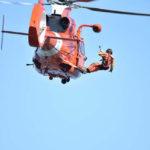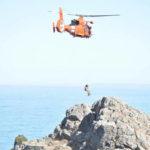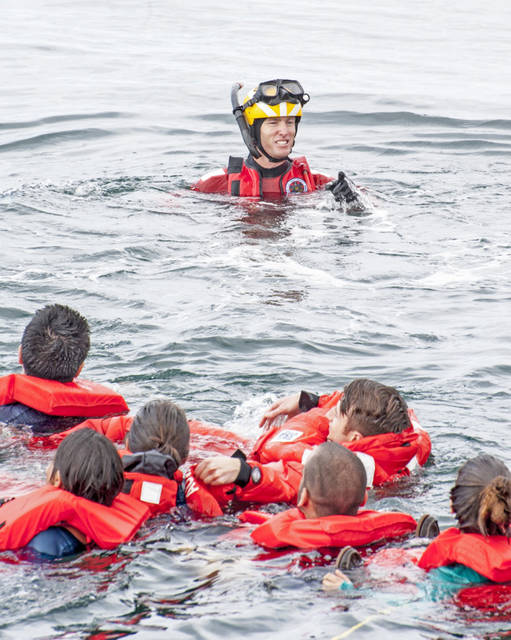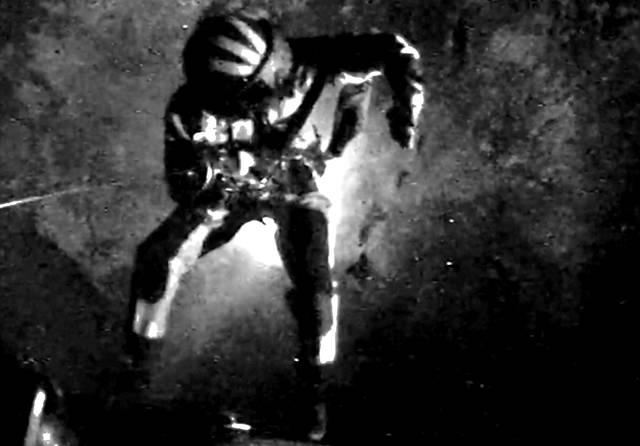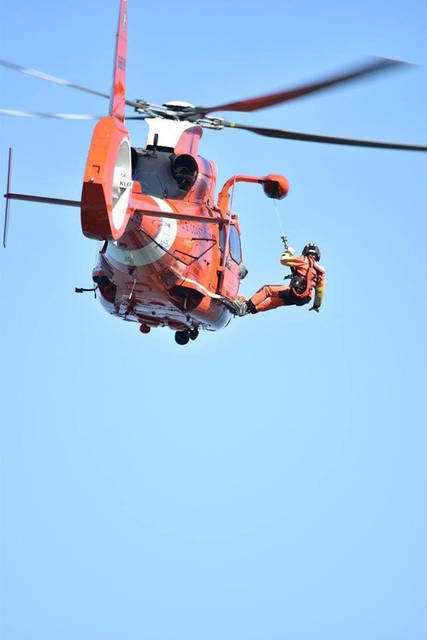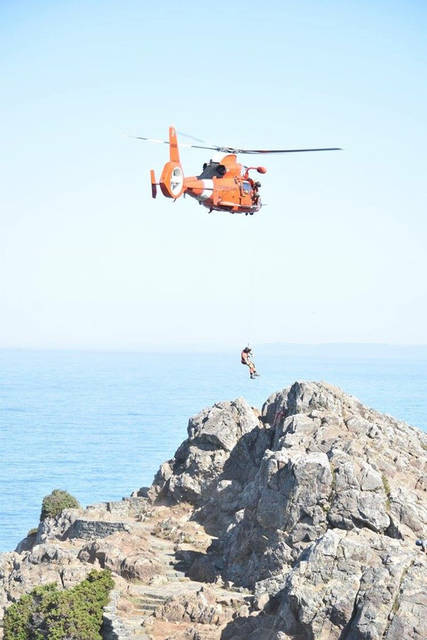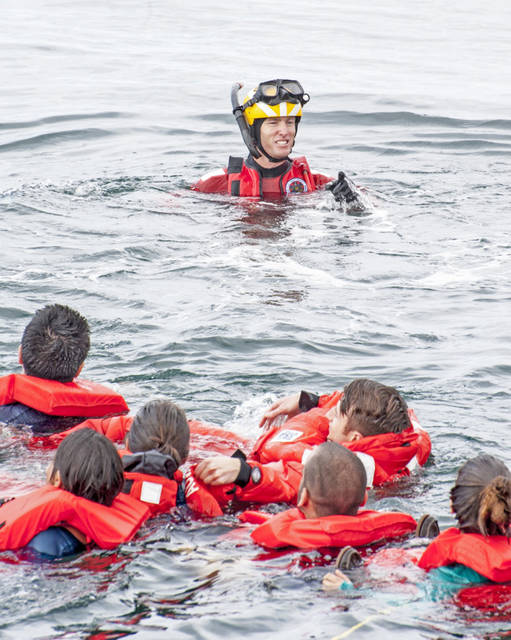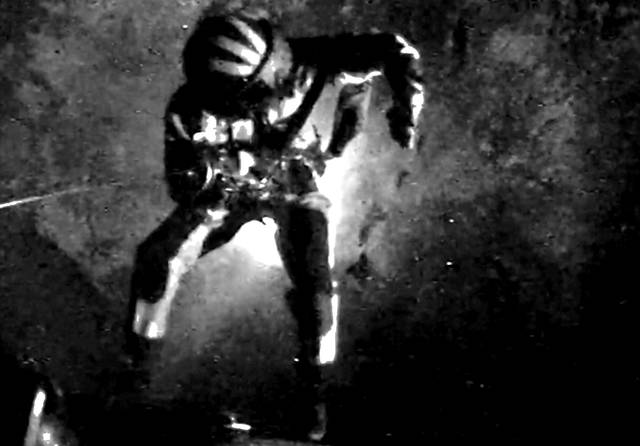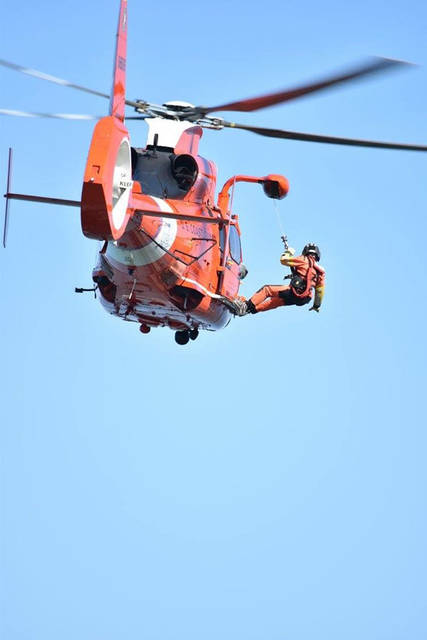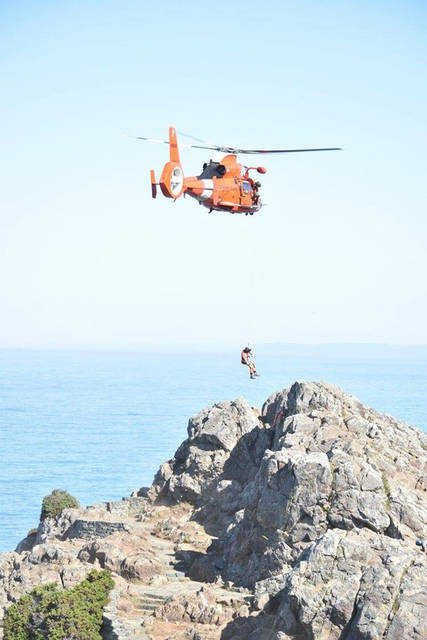A former Pahoa resident working with the U.S. Coast Guard in California defied death to rescue a 16-year-old boy from a cliff face earlier this month.
Petty Officer 1st Class Nick Gardner dangled more than 200 feet from a helicopter to reach the boy, who was stranded on a ledge on a coastal cliff. The rescue was, Gardner said, “one of the most nerve-wracking things I’ve ever done.”
Gardner grew up in Pahoa since he was 2 years old, he said, and graduated in 2002 from Pahoa High School. He joined the Coast Guard in 2004 and was stationed at Coast Guard Air Station Humboldt Bay in northern California last year.
“I try to go back and visit the Big Island every summer,” Gardner said.
The boy, a 16-year-old hiker, became stranded on a foot-wide ledge 300 feet above the ocean’s surface near Crescent City, Calif., late on Oct. 14. Gardner said he “never found out the full story” about how the teen fell off the cliff, but presumes he lost his footing and slid down the side of the 800-foot cliff before, in a stroke of immense fortune, finding a foothold.
Gardner said he typically performs about a half-dozen helicopter rescues along the California coast each year, and worked with other Coast Guard officers to aid in rescue efforts in Texas following hurricanes Harvey and Irma. The vast majority of those rescues, however, were water rescues, which are much less hazardous than cliffside rescues.
Cliffside rescues require a rescue crew to approach at higher altitudes in order to avoid striking the cliff face with the helicopter rotors. In this case, Gardner said the helicopter hovered 240 feet above the boy.
The rescue required Gardner to use all 245 feet of cable available on the helicopter.
“When you’re hanging that far, there’s a higher chance of swinging,” Gardner said. “I knew going in that I had one shot and if I messed up I could potentially knock the kid off the cliff.”
Complicating matters was the fact that the rescue happened after 10 p.m. on a moonless night. Although night vision devices and searchlights allowed Gardner to see the boy, the darkness made it harder to find a safe approach — an unseen tree branch too close to the rotors could have been catastrophic for the rescuers.
The rescue could not wait, though — the boy was already soaked from seawater and a nearby waterfall, and likely could not last the night.
“I don’t know how anyone else could have rescued him,” Gardner said.
Despite the precariousness of the situation, the rescue went off flawlessly.
“When I was carrying him out, he kept saying how unlucky he was,” Gardner said. “I told him to look down, look how high he was and see how lucky he actually was.”
The rescue crew transported the boy to a local airport, where medical responders picked him up to transport him to a hospital.
“We were all really excited when it was over,” Gardner said. “Obviously, we all feel the best when we’ve been able to save someone.”
Email Michael Brestovansky at mbrestovansky@hawaiitribune-herald.com






